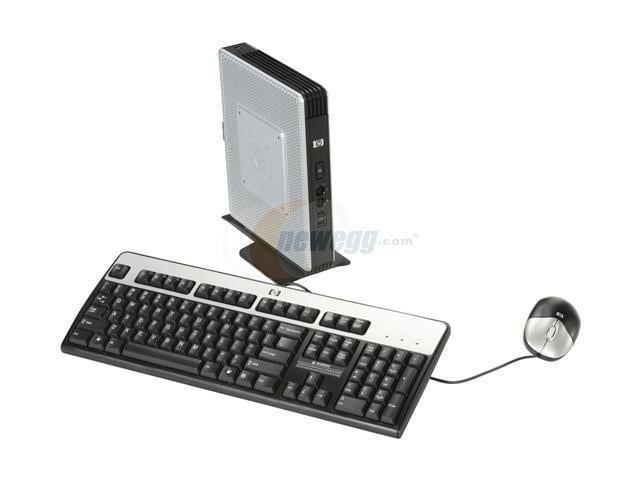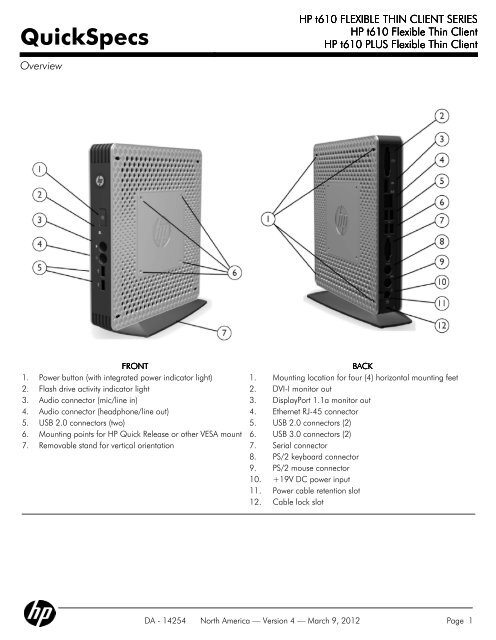Install Linux On Hp Thin Client

Welcome to LinuxQuestions.org, a friendly and active Linux Community.You are currently viewing LQ as a guest. By joining our community you will have the ability to post topics, receive our newsletter, use the advanced search, subscribe to threads and access many other special features. Registration is quick, simple and absolutely free. Today!Note that registered members see fewer ads, and ContentLink is completely disabled once you log in.Are you new to LinuxQuestions.org?

Visit the following links: If you have any problems with the registration process or your account login, please. If you need to reset your password,.Having a problem logging in? Please visit to clear all LQ-related cookies. Introduction to Linux - A Hands on GuideThis guide was created as an overview of the Linux Operating System, geared toward new users as an exploration tour and getting started guide, with exercises at the end of each chapter.For more advanced trainees it can be a desktop reference, and a collection of the base knowledge needed to proceed with system and network administration. This book contains many real life examples derived from the author's experience as a Linux system and network administrator, trainer and consultant. They hope these examples will help you to get a better understanding of the Linux system and that you feel encouraged to try out things on your own.to receive this Complete Guide absolutely free.
Hi everyone,I installed Chrome and can run it as the administrator on the thin client. However, I can't get it to run as a user, nor can I get it to auto load.We as a company are developing a back end that will be running on the Chromium core and simply need a front end for it. So, getting it to load Chrome on boot up would be ideal.At the moment it has the standard ThinOS but I am considering Damn Small Linux (DSL) as an option then strip it down, if I can't get Chrome to load. Perfect would be getting it to open in Kiosk mode.Thanks in advance.The process for installing Chrome if anyone wants to play around with this is:Open up the terminalType.
Install Ubuntu On Hp Thin Client
Code: fsunlock / fslock to toggle write abilitysudo apt-get purge firefoxwget -q -O - sudo apt-key add -sudo sh -c 'echo 'deb stable main' /etc/apt/sources.list.d/google.list'cd /etc/aptvi sources.listDelete the first #comment on the repository.sudo apt-get updatesudo apt-get install google-chrome-stablecd /usr/binvi google-chromeadd '-user-data-dir' to the end of the fileExample: exec-a '$0' '$HERE/chrome' '$@' -user-data-dirRun with: google-chromeThe following does not work. Code: sudo update-alternatives -config x-www-browserIf that works, just setting the thin client to kiosk mode should use the default browser as set by you.As for running an alternative Linux distro, I would advise against DSL for any future or current project as it's based on a really old and obsolete kernel.Rather use a customised version of Debian. Start with the minimal Debian headless image and add Xorg, a window manager and software that will be needed. (Openbox and a web browser appears to be all you really need as far as I can tell)Crunchbang is also worth considering as it provides an easy way to install either Chrome, Chromium or both without too much difficulty. Sorry for reviving an old thread. I've had an hp T510 thin client given to me and I'd like to see about making it more usable. I've upped the memory to 4GB and have both the 16GB sata module it comes with as well as a 120GB SSD which could also be used.
I've tried booting up kde neon but had issues with it as it would only do 640x480. I'm told it uses the openchrome driver but trying to install that on kde neon resulting in it hanging on reboot. I wouldn't mind having bodhi running on the little module because I could always insert a flashdrive for storage.
Basically I just need more info on what I need to do to get the hardware acccepted. Currently it's booting up into 'Windows 7 Starter' which doesn't really seem to let you do much of anything.Any feedback is appreciated. @Famewolf:Interestingly enough, at about the same time, I've got the same system, without the SSD. There seemed to be a lot of thin clients on ebay, with companies replacing them for ones that can run Win10.And I'm having the same problem: either 640x480 resolution, or black screen once it's booted up. There were problems with the graphics, and apparently it may be due to this:'the T510 uses the VX900 chipset, which is related enough to the VX800/VX855 chipsets that I know what the problem is. You've got version 0.3.3 of the openchrome driver, which has broken support for your chipset.' That's in a Puppy Linux discussion forum, under the heading 'Xorg fails w/ openchrome (VIA eden x2) (solved)'.
There's also a solution there (using Puppy Linux). (I can't post the link, as this is my first post on here.)I tried Lubuntu, which couldn't do the graphics and only offered 640x480; I found a post about installing a (newer?) version of Openchrome, and I tried that and a couple of other things, with the result that I got a black screen once it had booted. I may not have exhausted all possibilities with Lubuntu, but I moved on.I tried TinyCore, but TC's version of Chromium was too out of date to install extensions, which meant I couldn't do with the T510 what I wanted to.
Thin Client Linux
HiI got this HP thin client PC and I was wondering what OS I could install on it. It only has 2 GB of flash (IDE module on-board), and has an option for internal USB ports, but I want to run an OS off the flash storage instead, even if I can install some Linux to a USB and connect it to the internal USB, because it's probably easierI even tried Lubuntu and it was failing because I was getting an error when trying to select and install software during the install phaseWhat would you recommend? I need something because I accidentally deleted the Windows Embedded that was on there, bc it was one of the WinXP based version of Embedded.Thanks!PS: It has 2 GB of DDR3, and an Atom N280 (single core + HT). Welcome to the forums, andymacsteve2GB of flash will not allow you to install any kind of dynamic OS, but you can try installing an ISO image and run it as a LiveUSB/DVD. 2 GB is not enough for persistence, so you will only have a static OS—i.e can't add apps or internally save data (except to external storage). With 2GB RAM, I would stick with Lubuntu.
You could also try Puppy, Tiny Core or Slitaz, all of which run as LiveUSB/DVD static images by default.To be honest, these sorts of thin clients are very hobbled—as you are discovering—though useful in kiosks and other static uses, they haven't much other modern-day use. Thanks, but I tried installing Lubuntu and I think I was getting an error trying to install the software packages during installationI think its because there's not enough space on the flash storage. However, I want a way to install a Linux OS of some sort, straight to the flash as opposed to having a USB drive plugged in all the time.Also, I can't really remove the flash module either.
I can, but I don't really want to. So, how can I install A Linux OS to thereLast edited by andymacsteve; February 28th, 2017 at 01:13 AM. Perhaps I wasn't being clear. You won't be able to install Lubuntu the 'regular' way.
That is, by booting into a USB stick and then choosing Install. This installs a dynamically functioning OS. What you must do is turn your flash memory itself into a Live/USB stick, and then run only LiveUSB sessions from it, if you catch my meaning.In general terms, the strategy is this:. You need two USB sticks. On the first one, you need to install a proper LiveUSB session.
You already have that. It's the one that you typically install with. On the second stick, you want a copy of the actual ISO image itself. You do not want this expanded into a LiveUSB. Using the LiveUSB, you do not do an 'Install'. Instead, using an app like Startup Disk Creator and using the ISO on your second USB stick as your source image, you create a Startup Disk on your 2GB flash module in your computer. To reiterate, you would normally use this process to create a LiveUSB for installation purposes.
In this case, you are using your flash module as that LiveUSB. Every time you boot up, your computer will now ask you whether you want to install Lubuntu or run a LiveUSB session. Of course, you choose the live session.CAVEAT.The above is just theory. I've never tried it, since I've never had occasion to do so. In theory it should work.
But in practice, I don't know what odd real-world thing may prevent it from doing so.As already mentioned, the resulting installation will behave very much as a LiveUSB. The OS itself will be read only. You won't be able to update or upgrade. Any apps you install will be only in RAM and will disappear as soon as you power down. You won't be able to change any of your /home settings or, indeed, store anything into /home at all. You will, in short, have a very limiting computing experience, but it's one way to get your severely hobbled hardware running Lubuntu.And again, as already mentioned, since Puppy, Slitaz and Tiny Core are already designed to run as static LiveUSB installations (with persistence) they may actually prove to be better choices for your situation.

You should give them a try.